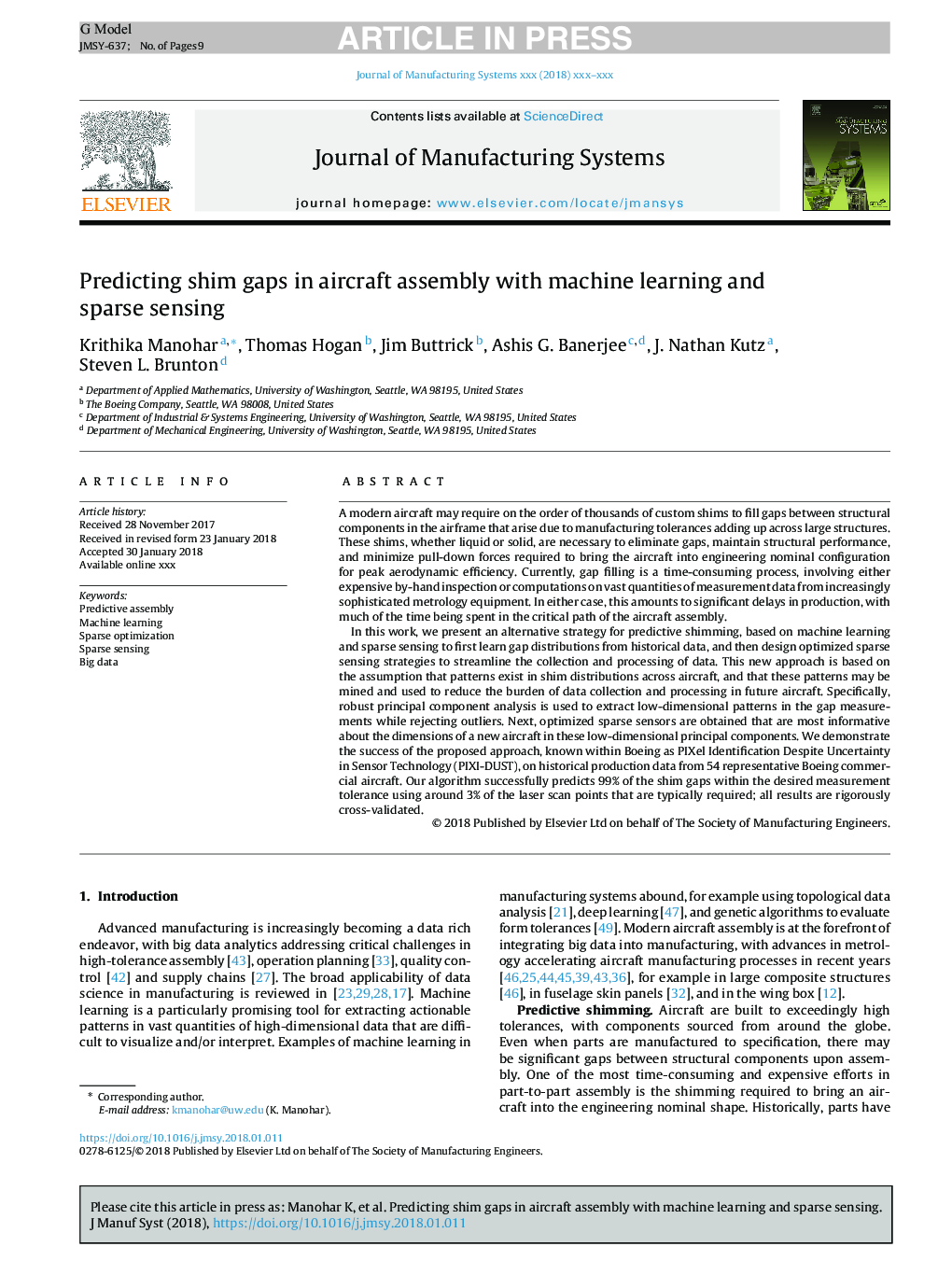| Article ID | Journal | Published Year | Pages | File Type |
|---|---|---|---|---|
| 10156159 | Journal of Manufacturing Systems | 2018 | 9 Pages |
Abstract
In this work, we present an alternative strategy for predictive shimming, based on machine learning and sparse sensing to first learn gap distributions from historical data, and then design optimized sparse sensing strategies to streamline the collection and processing of data. This new approach is based on the assumption that patterns exist in shim distributions across aircraft, and that these patterns may be mined and used to reduce the burden of data collection and processing in future aircraft. Specifically, robust principal component analysis is used to extract low-dimensional patterns in the gap measurements while rejecting outliers. Next, optimized sparse sensors are obtained that are most informative about the dimensions of a new aircraft in these low-dimensional principal components. We demonstrate the success of the proposed approach, known within Boeing as PIXel Identification Despite Uncertainty in Sensor Technology (PIXI-DUST), on historical production data from 54 representative Boeing commercial aircraft. Our algorithm successfully predicts 99% of the shim gaps within the desired measurement tolerance using around 3% of the laser scan points that are typically required; all results are rigorously cross-validated.
Related Topics
Physical Sciences and Engineering
Engineering
Control and Systems Engineering
Authors
Krithika Manohar, Thomas Hogan, Jim Buttrick, Ashis G. Banerjee, J. Nathan Kutz, Steven L. Brunton,
